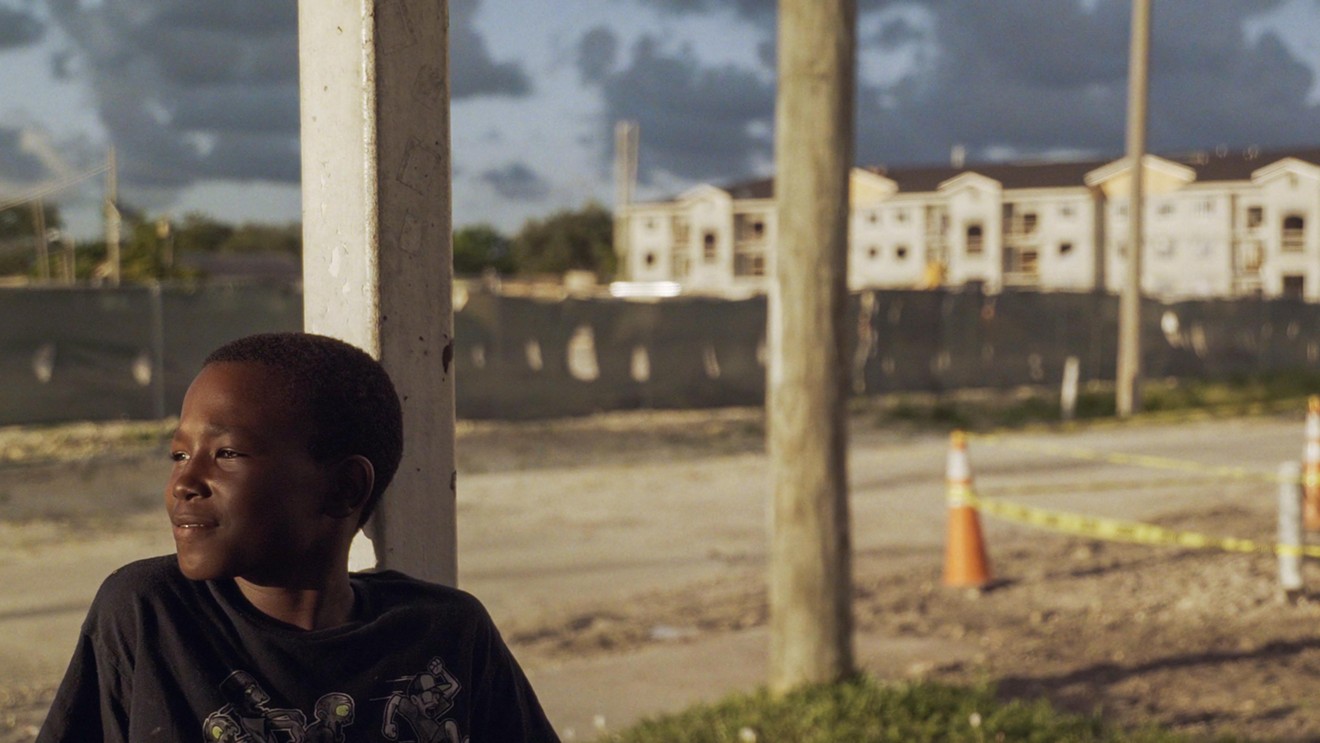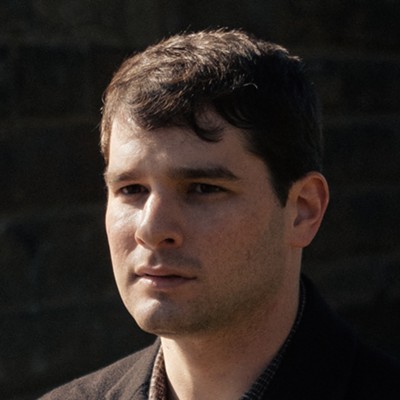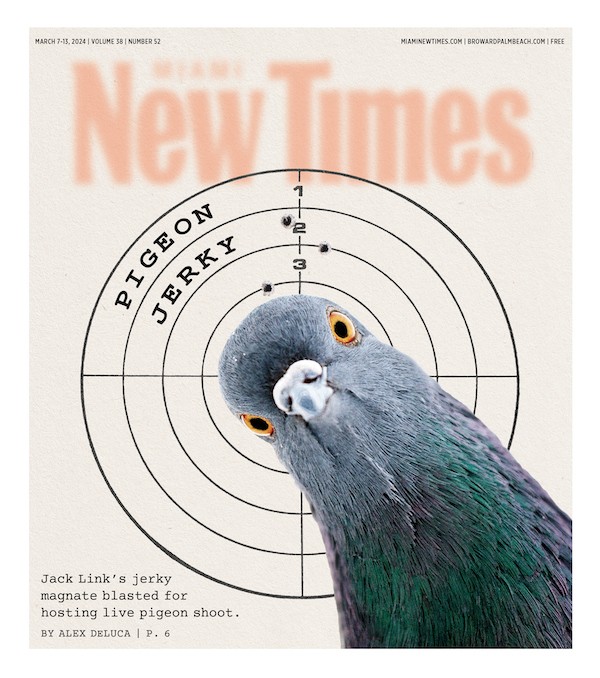Nowhere is that more evident than in Liberty City. The neighborhood grew up around Liberty Square, which opened in 1937 as the first segregated public housing project in the South. White civic leaders pitched it as a two-birds-one-stone solution to the existence of the city's Black population forced by Jim Crow laws into overcrowded areas such as Overtown. Black residents would get new homes, and the city's white business elites would get access to the valuable land in what was then called Colored Town.
To put it mildly, Liberty Square would face ups and downs. During the midcentury, it was a thriving community full of Black families. Residents would go swimming at the nearby Hampton House, a segregated hotel where Black leaders and celebrities could stay. Urban decay would set in after middle-class households fled in the wake of desegregation, which only worsened after the 1980 riots following the acquittal of the officers involved in the death of Arthur McDuffie by an all-white, all-male jury.
Katja Esson is perhaps more aware of the area's history than most, though she didn't always feel that way. A native of Hamburg, Germany, she moved to Miami in 1987 to study film and theater at the University of Miami. Some of her first film industry jobs were as a production assistant on the 2 Live Crew's music videos shot in Liberty City.
After a long spell in New York, she returned to Miami in 2016. It was the same year Barry Jenkins' Moonlight cast Liberty Square into cinematic history. It was also shortly after the city announced the project's redevelopment. She decided to make a documentary about the housing project.
"What drove me was the fact that I felt really ignorant, that I did not know so much about Miami's Black history," Esson says. "I did not know about the segregation wall that's right next to Liberty Square. I did not know Liberty Square's history. At that point, I didn't even know about the Hampton House. I just couldn't believe I didn't know any of this. And that became one driving force, just to preserve the history."
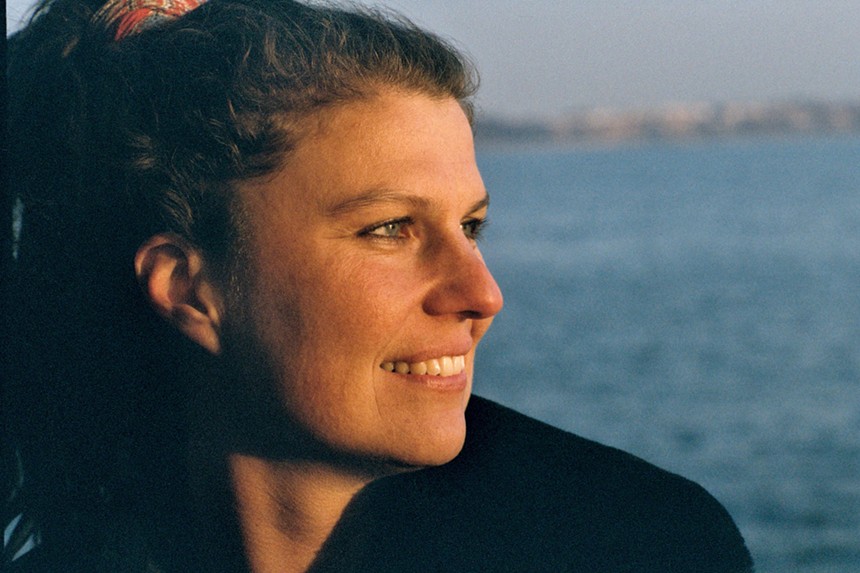
Katja Esson is the director of Razing Liberty Square. She started her career as a production assistant on music videos for the 2 Live Crew.
Photo by Fred Shipman
As Valencia Gunder, an activist and Liberty City resident from birth, notes in the film, Liberty City is ground zero for "climate gentrification." As most longtime residents know, Miami is one of the most susceptible cities on Earth to climate change, and through a twist of fate, the area happens to have some of the highest elevation in the entire city. Therefore, as the threat of sea-level rise increases, it is potentially the most valuable land in South Florida.
"My grandfather would always say, 'They're gonna come take Liberty City because we don't flood," Gunder says. "When they built Miami, they wanted it to be this beachfront paradise. But the people of color were forced to the middle of the city. This was the place nobody wanted to live, other than the people that were forced to live here — and now they want it."
As shown in the film, the county's plans to demolish the existing project and build new mixed-income apartments in its place were controversial from the start. The developer, Related Urban Development Group, was given $300 million by the county to rebuild Liberty Square. At first, promises were made by Related Urban and then-Miami-Dade County Mayor Carlos Giménez that the community around Liberty Square would be retained. Residents would be moved around the existing complex during construction, and new amenities, such as shops and grocery stores, would eventually become available. Aaron McKinney, a development coordinator with Related Urban born and raised in Liberty City, acted as a middleman between the residents and the company, hoping the addition of new, higher-income residents would prevent the area from being overwhelmed by the poverty and violence of the past.
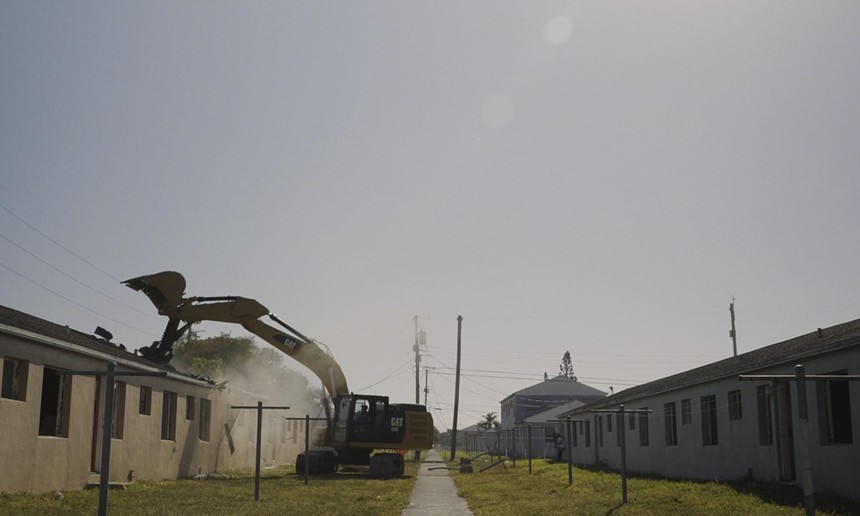
A bulldozer tears down a building in Liberty Square. The housing project's redevelopment is the subject of Katja Esson's documentary Razing Liberty Square.
Photo by Hector David Rosales
"They must have known the moment they made these vouchers available that people would leave," Esson says. "To quote Aaron, it depends on how you define displacement. The people left voluntarily, but the fact is that there was a mass exodus. That was not the original idea at all."
To stay or to go, to invest in a community that's bound to change or move on, is a dilemma that animates many of the storylines in Razing Liberty Square. Sam Kenley, a Liberty Square resident and mother of seven children, initially wanted to stay, but a violent summer made her reconsider. But when the market proved to be worse than feared — more expensive and just as decrepit as the old projects — she ended up taking one of the new apartments.
Gunder, the activist, also decided to stay in the area but not in the projects. With her career as an activist taking off — near the end of the film, she's seen giving a speech on climate gentrification to a mostly white audience at a conference — she was able to buy a newly built single-family home in the neighborhood. One of the last scenes in her arc shows her housewarming party. McKinney, meanwhile, left his job at Related Urban. Having failed to keep the community together, at the end of the film, he felt frustrated, powerless, and taken advantage of as a "diversity hire."
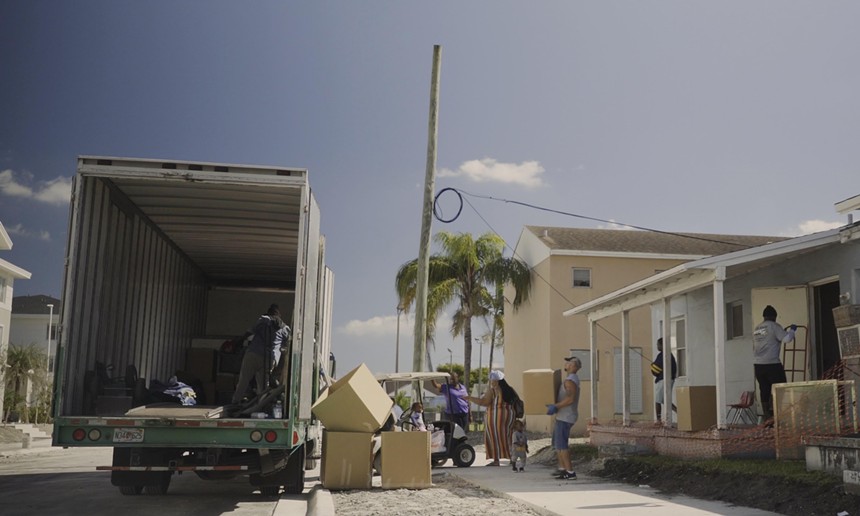
Sam Kenley and her children move out of their old project housing. The family attempted to find a place to live outside the projects before accepting an apartment in the new Liberty Square.
Photo by Hector David Rosales
Esson says she and other organizations are working to fix the issues and prevent similar problems in the apartments still under construction and that Alex R. Ballina, the new director of housing under current Mayor Daniella Levine Cava, has been open to collaboration. But as Razing Liberty Square shows, the government and developer minds aren't with the people living in Liberty City. In Giménez's only interview, he declared Miami "one of the hottest new real estate markets, not only in the United States but in the world." Albert Milo, the president of Related Urban, made it even more plain. "This is not about housing," he said. "This is about economic development."
Razing Liberty Square screens on PBS' Independent Lens on Monday, January 29. Check local listings. Coral Gables Art Cinema will host an opening night event at 7 p.m. on Friday, January 26, with panel discussions accompanying screenings on Sunday, January 28, and Thursday, February 1.
Razing Liberty Square. Friday, January 26, through Thursday, February 1, at Coral Gables Art Cinema, 260 Aragon Ave., Coral Gables; 786-472-2249; gablescinema.com. Tickets cost $11 to $12.75.

